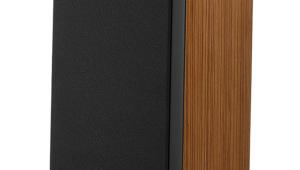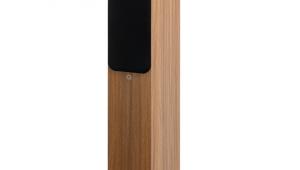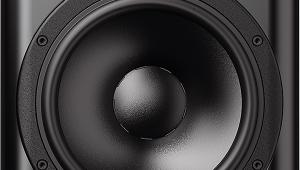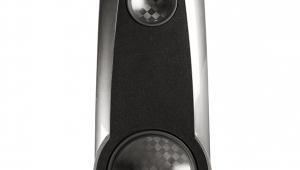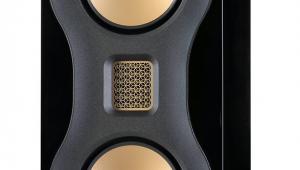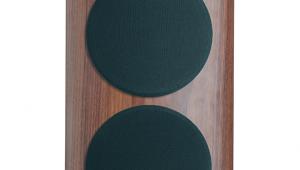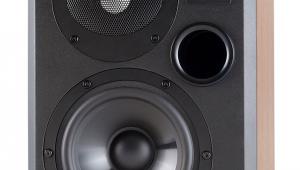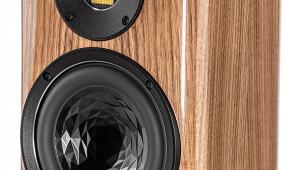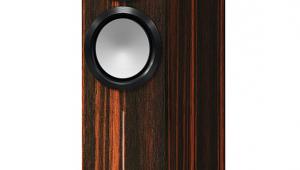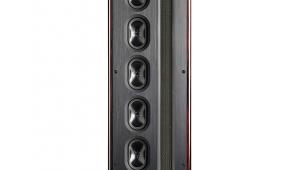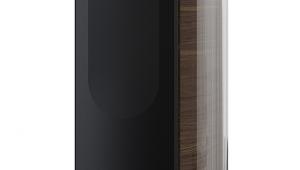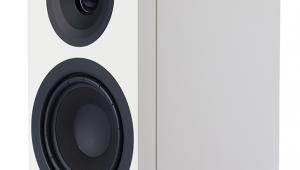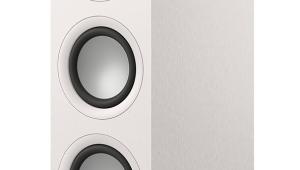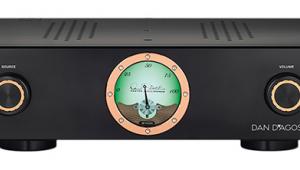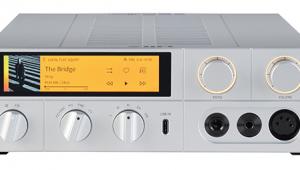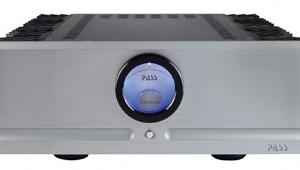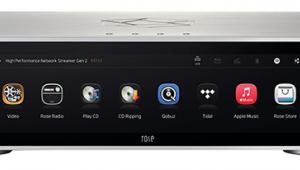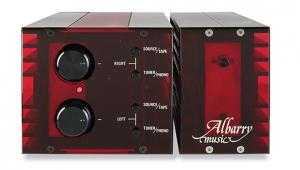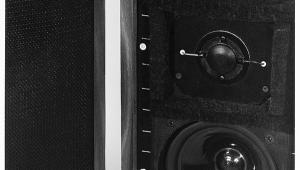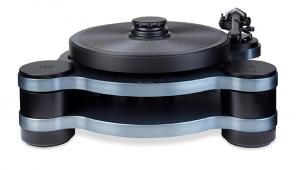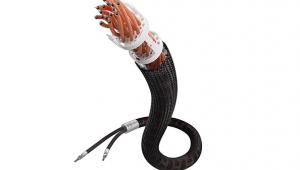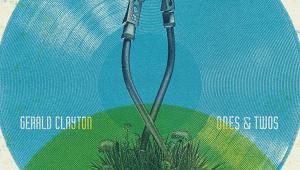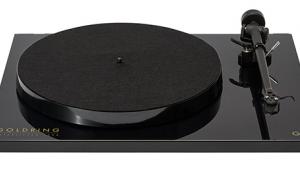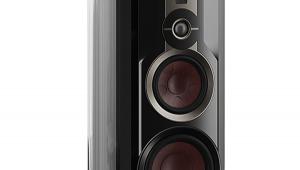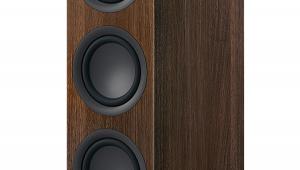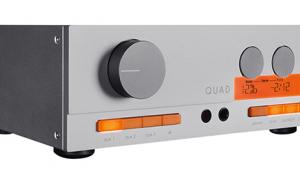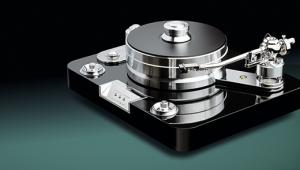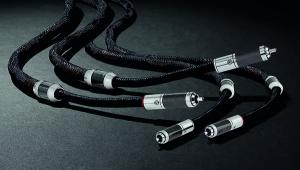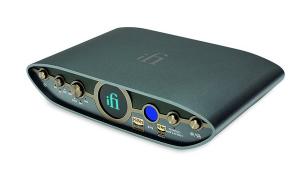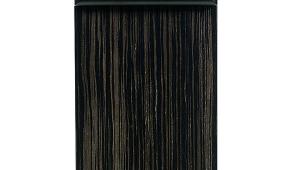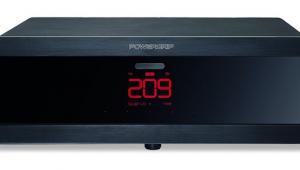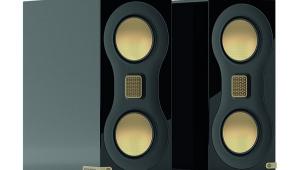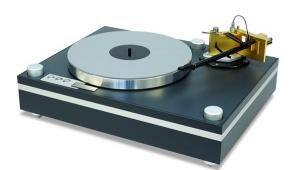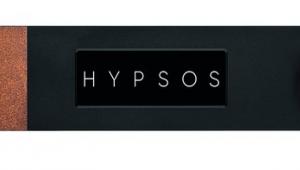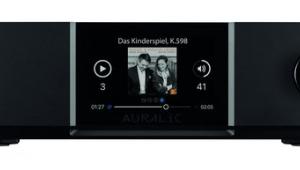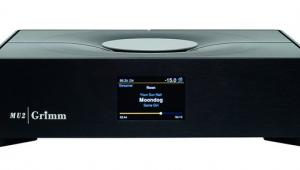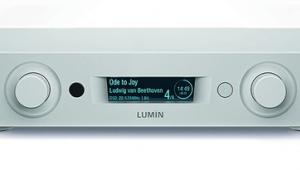Piega Premium 301 Gen2 loudspeaker
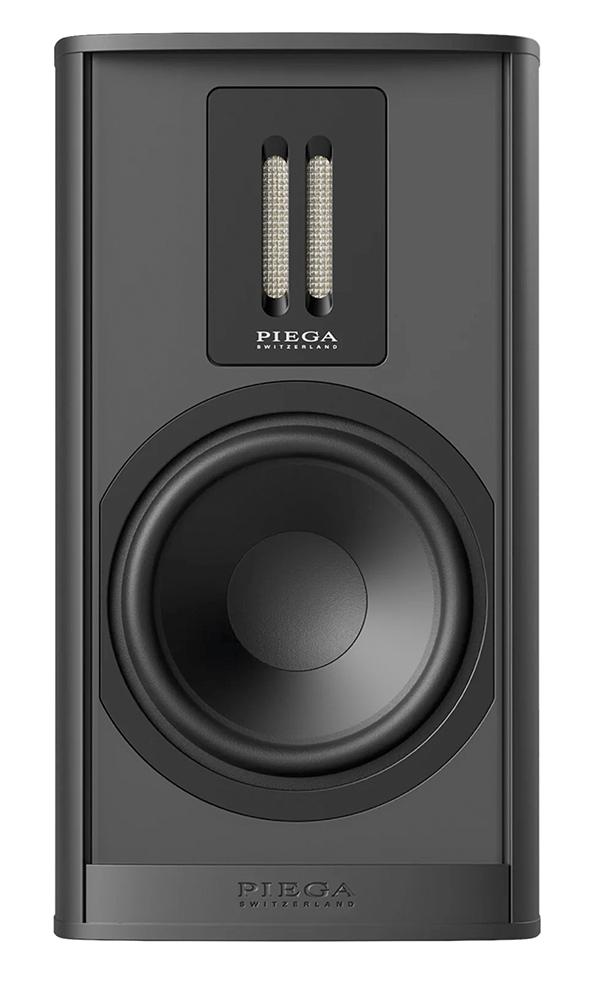

While the usual rallying cry of a Hollywood producer is for any movie sequel to be ‘bigger and better’, Piega’s approach for the Gen2 iteration of its Premium 301 loudspeaker is to make it better while also making it smaller. And considering the original model, released in 2019, was itself described as a ‘compact loudspeaker with a baffle about the size of an A4 sheet’, this is perhaps something of an achievement.
Ticketed from £2500, Piega’s Premium 301 Gen2 is a true miniature, similar in overall size to an LS3/5a [HFN Jun ’25] or System Audio’s Signature 5 [HFN Feb ’25], and smaller than the likes of KEF’s LS50 Meta [HFN Jun ’21]. Some manufacturers have a habit of advertising any compact standmount as a ‘bookshelf’ model, though few fit the bill. Measuring just 310x170x228mm (hwd), the 301 Gen2 could likely squeeze onto a shelf, and Piega also sells a swivelling ‘Ball Joint’ bracket for on-wall installation, making use of the speaker’s modest 6.1kg mass. Meanwhile for a more conventional set-up, you can add the company’s tall, Premium stand.
Ribbon reimagined
Like many of Piega’s loudspeakers going back to 1997 [see boxout], the 301 Gen2’s cabinet is fashioned from extruded aluminium. The Swiss manufacturer suggests this gives it a ‘seamless’ finish though, naturally, the top and bottom plates are clearly separate. Still, the main cabinet body, which curves around to a slim rear, is a single piece, and the overall look, from the pen of designer/architect Stephan Hürlemann, is smart and unobtrusive. Versus the outgoing model, Piega says its new design is ‘slimmer and more visually harmonious’.
Finish options are natural aluminium as standard, or black [pictured] or white anodising for a £250 premium. The playful colours of Piega’s step-up Coax series are not offered, and neither does the 301 Gen2 follow their lead by squeezing a three-way driver configuration into its standmount cabinet. The ‘ribbon’ tweeter, actually an isodynamic type, is paired with a conventional bass/mid driver, instead of being coaxially mounted with a planar midrange and backed by a dedicated woofer, à la the Coax 411 [HFN Feb ’25].
Foil formulation
This HF unit is a key point of difference between the 301 Gen2 and its predecessor. Named ‘RM01-24’, the M standing for Piega’s ‘ribbon specialist’ Mario Ballabio and the R for chief designer Roger Kessler, it’s the result of a development process of ‘more than 30 prototypes’ to improve, says Piega, ‘linearity and reduce distortion’. Specifically, the magnetic suspension around the ultra-thin aluminium foil has been revised to include both rear and front rows, resulting in a configuration that ‘creates strictly orthogonal magnetic field lines’. The driver’s internal damping has also been further optimised.
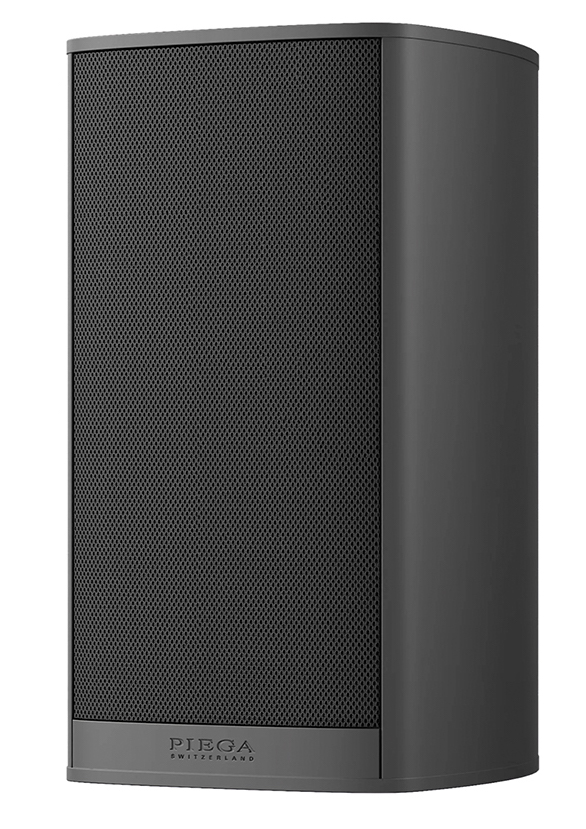
Underneath the new RM01-24 is the Premium 301 Gen2’s 140mm coated alloy bass/mid driver. This FSD (Full Symmetrical Drive) unit sports a revised cone profile and crosses out to the tweeter at around 3.5kHz [see PM's Lab Report]. For those seeking a bigger sound, the Gen2 series’ three-way floorstander, the £5600 Premium 701, partners the same RM01-24 planar tweeter with three 140mm drivers, one devoted to the midrange. But the Premium 501 model, a slim two-way tower with a pair of 120mm midrange units, has not been revamped for this second-generation family. Also note that wireless, active versions of the Premium models, launched in Gen2 guise in 2023, don’t employ the new tweeter.
Piega recommends keeping the 301 Gen2’s grilles – which are colour-matched to your cabinet choice – in place. On many of its other loudspeakers this almost goes without saying, as they lock so securely into position that a powerful magnet is required to prise them off, but on this model they are not quite as snug-fitting, making it easy to inspect the drivers behind. Still, there are benefits to leaving them in situ [see PM's Lab Report].
For our auditioning, we paired the 301 Gen2s primarily with a Primare A35.2 power amp [HFN Dec ’19] and Rotel Michi P5 S2 preamp [HFN May ’24], but also used them with a WiiM Amp [HFN Nov ’24] for an ultra-compact system. Listening began with the speakers about 10cm from the rear wall, this being Piega’s suggested ‘minimum’ distance and giving a degree of bass extension to make these compact models sound, ostensibly, beefy. It’s an exciting sound, and – should the speakers end up being forced into such a position due to space constraints – not unappealing. However, moving them another 20-30cm away from the wall noticeably evened out the bass response.
It is worth fine-tuning the 301 Gen2’s siting – grilles on and toed slightly inward – as they can deliver knockout sonics, up to a certain scale or weight, and typically beyond that of more price-conscious rivals of similar size. The sound is ripe with detail across the audio band without sugar-coating basses or male vocals. There’s air and space around the upper frequencies, and it’s dynamic too, revealing the vigour of orchestral recordings and the driving energy of rock with a realism that belies those diminutive cabinets.
Listening to ‘The Fountainhead’, from The Bluetones’ Expecting To Fly [Superior Quality Recordings BLUECD 004], it was easy to become absorbed in the lyrics and layers of acoustic and electric guitar, with the bassline underneath well-balanced without recourse to boundary loading. The Bluetones had a bit of a ‘jangle-pop’ sound, which isn’t the sort of thing you want to feed an overly bright speaker. The 301 Gen2 offered treble zing and sparkle that was always on the right side of fatiguing.
The speaker’s bass/mid driver and cabinet tuning combine to deliver basslines and low-end effects with plenty of nuance if not rib-tickling mass. On ‘Tin Pan Alley (AKA The Roughest Place In Town)’ by Stevie Ray Vaughan and Double Trouble [Couldn’t Stand The Weather, Epic; 176.4kHz/24-bit], Tommy Shannon’s bass playing became a mix of man and instrument, rather than just an indistinct low throb. Bends of strings and the attack of Shannon’s fingers were vividly displayed, as distinct as Vaughan’s blues licks. Elsewhere, the cascading basslines of ‘Think It Over’ [Dream; Shanachie SH 5827], from soul singer Angie Stone, were equally well defined.
Flack attack
Bigger speakers with bigger bass drivers will typically deliver more low frequency scale and extension, so the 301 Gen2 skated over some of the lowest notes in DC Breaks’ dance track ‘Club Thug’ [DCXV; Ram Records]. Adding a subwoofer here, in the form of Monitor Audio’s compact Anthra W10 – on hand at the time for review in sister title Hi-Fi Choice – paid dividends. Piega sells its own line of subs, the £2400 PS 101 being an obvious partner for its Premium and Coax models.
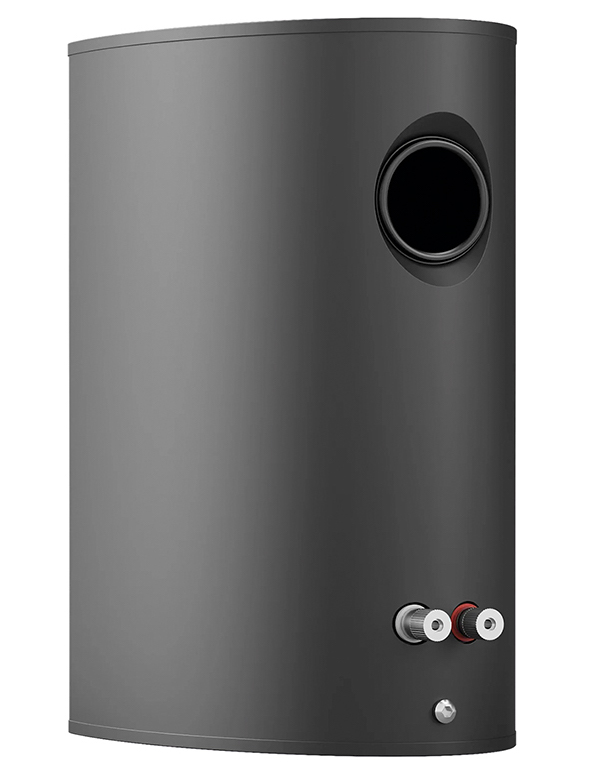
Otherwise, the 301 Gen2 still beguiles with its mix of poise and delicacy. Roberta Flack’s cover of ‘In A Sentimental Mood’ [Roberta; Atlantic 7567-82597-2] starts with crisp percussion, followed by forceful, funky hits of keyboard and guitar – the speakers coaxing out the ringing hi-hat, and letting the transients shine for a very dynamic presentation. The rhythm section sounded wonderfully tight, a springboard for Flack’s smooth, soulful vocals and the typically polished 1990s production.
Hell raiser
Conversely, the same artist’s ‘Tryin’ Times’ [First Take, Atlantic/Rhino; 192kHz/24-bit] came across with the qualities of its 1969 recording in full view, with tape hiss and a slightly diffuse feel to the piano. But there was still good separation and depth of field, with the space between the instruments well conveyed. Her classic vocal on ‘The First Time I Ever Saw Your Face’ was given all the power it needed, soaring at times, backed by long, drawn cello notes with admirable texture.
The 301 Gen2’s insightful sound also worked wonders with John Williams’ ‘Superman March’. Listening at first to a rendition by the Berlin Philharmonic [The Berlin Concert, Deutsche Grammophon; 192kHz/24-bit], the speakers delivered all the drama and timbral detail of the opening blasts of brass and timpani, and the long decay before the full orchestra takes over. Yet the latter was more noticeable on the same label’s John Williams Live In Tokyo recording with the Saito Kinen Orchestra [DG; 96kHz/24-bit], where the sweeps of the massed strings sounded smoother. Piega’s speaker is certainly effective at unearthing such minor differences.
Missing was the kind of massive soundscape to make these pieces all-encompassing – the 301 Gen2s favouring focus and control. Yet Eminem’s studio-produced ‘Superman’ [The Eminem Show; Interscope 493 290-2], with its added bass heft and upfront sound, did feel both immersive and largescale, as did the title track from AC/DC’s ‘Highway To Hell’ [Epic EPC 510764 2], with its echo-laden riffs and drums.
Seeking warmth and bounce? Then try Dennis Wilson’s ‘Pacific Ocean Blues’ [Pacific Ocean Blue; Caribou Records 88985368632] – one of the funkiest blues jams ever recorded, and a reminder that Brian wasn’t the only Beach Boy with musical magic in his fingertips. Again, the 301 Gen2 played it straight, avoiding any extra bloom or romance while digging into the various tones and colours. If detail, transparency, and dynamism are on your wish-list, Piega’s compact speaker is made to measure.
Hi-Fi News Verdict
Piega can be commended for not losing sight of its core principles even when targeting small room set-ups, and so the Premium 301 Gen2, with its smart alloy cabinet and planar magnetic driver, is cut from the same cloth as its larger designs. The performance adheres to the Swiss brand’s ‘house sound’ too – detailed, focused and tonally neutral. These are an obvious audition for wherever space is at a premium!Sound Quality: 86%
